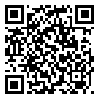Volume 12, Issue 47 (10-2003)
JGUMS 2003, 12(47): 73-79 |
Back to browse issues page
Abstract: (9763 Views)
Introduction: The increase of medical knowledge and technology has opened new horizons in the field of patient treatments. In this instance, use of standard equipments and resources and also application of theories for quality care are necessary in all fields of patient treatment as well as operating rooms (Ors).
Objective: This study was done by a descriptive and research method to determine the existing issues and problems in operating rooms in Iran from 2001 to 2002.
Materials and Methods: Data collection tool consisted of a four part questionnaire which covered problems related to infection control, or personnel performance, equipments and resources related to safety in OR and profession needs (such as promotion).The sample consisted of 100 OR personnel from 20 provinces in Iran.
Results: The majority of samples (98%)did not use special gowns during infectious surgical operations and only 32% of them admitted to using various disinfectants as a means of infection control.90% of samples said that cleaning and preparing surgery sets were done by unprofessional personnel. 92% of samples didn't communicate with their patients and 100% of samples did not use protective shields for their patients.86% of samples declared there were no safety facilities against X-rays and 90% said there was no standard air conditioning.
In regard to profession needs, the results indicated that for 84% of samples even planning for holding medical conferences was not carried out by managers or heads of ORs.
Conclusion: Research finding indicated that the most important problems in ORs in Iran included control infection, lack of safety or structural facilities and non- fulfillment of profession needs.
Review Paper: Research |
Subject:
Special
Received: 2014/09/17 | Accepted: 2014/09/17 | Published: 2014/09/17
Received: 2014/09/17 | Accepted: 2014/09/17 | Published: 2014/09/17
| Rights and permissions | |
 | This work is licensed under a Creative Commons Attribution-NonCommercial 4.0 International License. |


